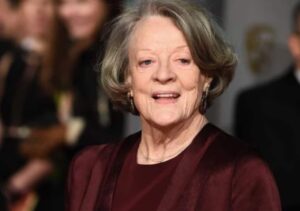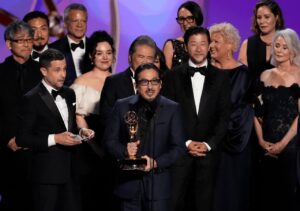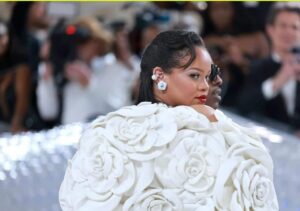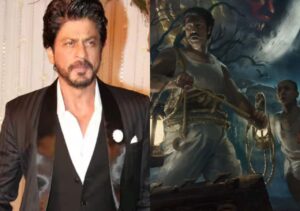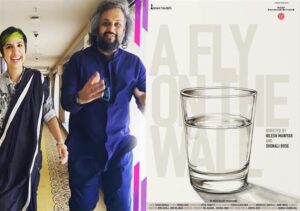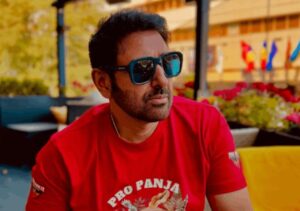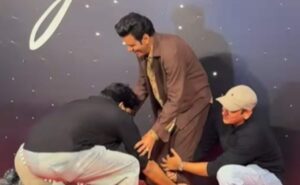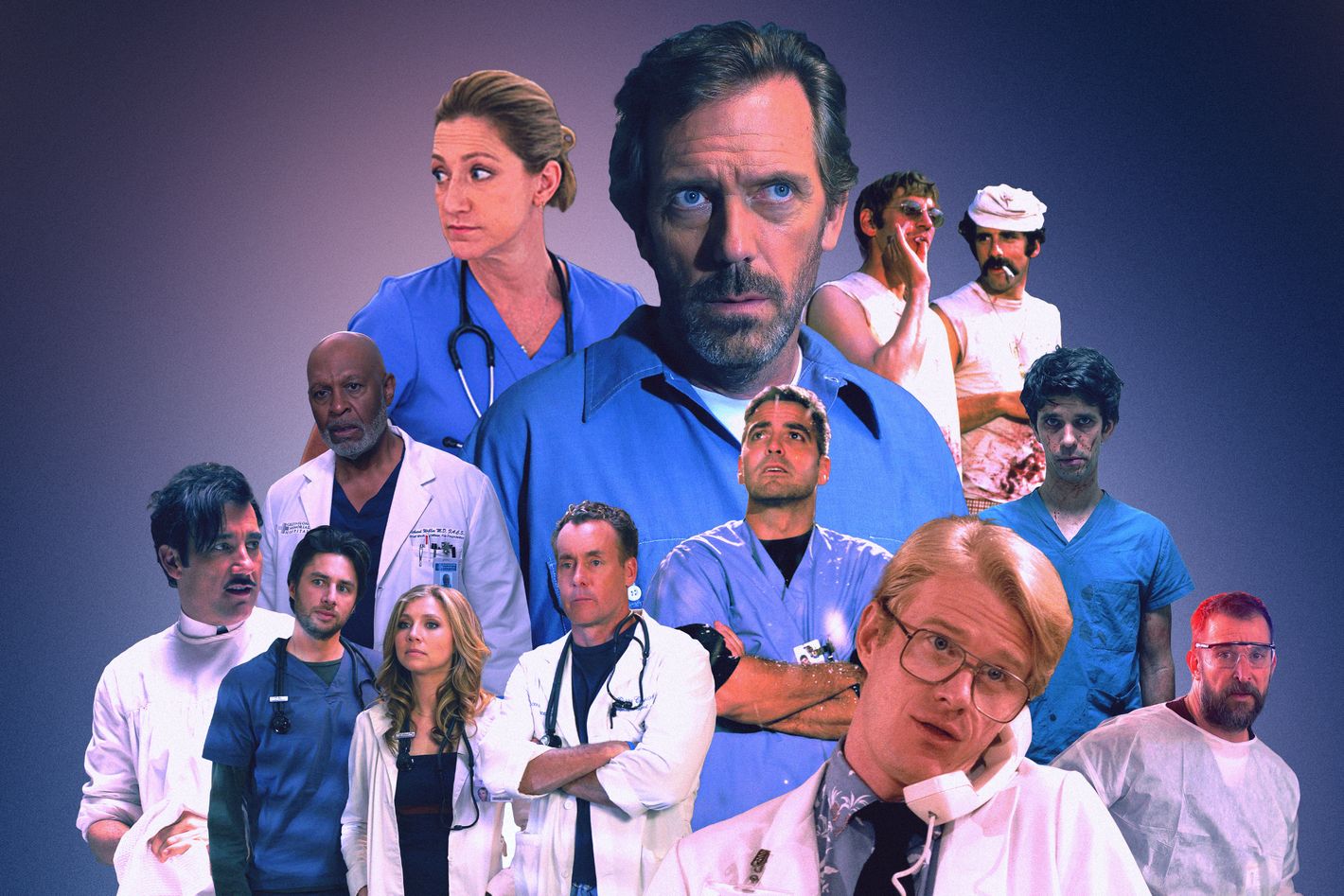
The first scripted medical television show was 1951’s City Hospital. The series, which began on ABC before moving to CBS, followed the professional and personal lives of several doctors working, as the title suggests, at a large city hospital. And thus, a genre of television was born. In the decades since, medical shows have become ubiquitous. Sure, they go in and out of style, but they’re always there, chugging away. Over the years, the genre has grown and shifted and pushed boundaries and taken risks and grown and shifted again. Medical TV shows can lean into melodrama or comedy or mystery. There are as many terrible ones as there are genre-defining ones. So how do you go about choosing the best of them? Well, first, you make some ground rules: Just to help ourselves out here, this list sticks to English-language medical TV shows (although fans of the genre should check out Apple TV+’s Berlin ER and the K-drama Hospital Playlist, available on Netflix). We’re also sticking to prime time only; apologies to General Hospital. And while not every show on this list takes place in a hospital, they’re all medicine-forward.
The 25 shows on this list run the gamut from solid genre staples to examples of how diverse this genre actually is, and, of course, the game changers; the medical series that pushed the genre forward, that made it better. We’re considering all the symptoms of a great med show — at least somewhat realistic medicine, engrossing patient stories, real points of view, writing that rises above tropes, and, yes, layered portrayals of medical professionals. So, toss on your scrubs, because it’s time for rounds and we have 25 patients to discuss.
Chicago Med
10 seasons; NBC (2015–present)
Okay, listen, not all medical shows are going to reinvent the genre. Sometimes, you just want a solid hour of television with characters who are easy to root for and compelling enough patient stories to scratch the itch without leaving you crying in the fetal position for 20 to 25 minutes after the episode has ended. Sometimes, you just want a medical show that is competent, but also you can freely do your laundry while watching. Out of a lot of current options along these lines, Chicago Med stands out above the rest. It gets trope-y and is a little too self-serious, but this is a Dick Wolf production — the third in his One Chicago dynasty — and the guy knows how to make very consumable television. And with S. Epatha Merkerson and Oliver Platt at the helm while the rest of the main cast tends to rotate out — some pop more than others — any mid-afternoon medical-drama cravings you have will be easily satiated here.
New Amsterdam
5 seasons; NBC (2018–2023)
Like Chicago Med, New Amsterdam is another one of your trope-filled but solid medical dramas — only with the earnestness dialed up. (This is good or bad depending on personal taste, obviously.) Ryan Eggold stars as Max Goodwin, the medical director at New Amsterdam Medical Center — based on Bellevue Hospital, the oldest in New York City — with hopes of dismantling the bureaucracy that’s hindering patient care. He is selfless and full of hope. These days, it feels almost like a fantasy (or a nice bubble to escape into), but Eggold really sells it. It’s at its best in its middle seasons thanks to a compelling will-they, won’t-they romance, but all five make for a nice, wholesome binge.
Transplant
4 seasons; CTV/NBC (2020–2024)
Canadian drama Transplant is another series in the bucket of solid medical shows, but it has one aspect that sets it apart: an excellent lead performance from Hamza Haq and an instantly compelling main character in Dr. Bashir Hamed. (Who, I am so happy to tell you, is not a transplant surgeon.) Bashir is a Syrian refugee living in Toronto with his younger sister after the Syrian Civil War, and after some wild events in the pilot, he earns a position as an emergency-medicine doctor at York Memorial. The only catch: He has to restart his residency regardless of his career in Syria. Bashir is talented, kind, and reserved, never arrogant about his obvious skills. Haq imbues him with a world-weariness and soulfulness that makes him easy to root for and offers a nice change of pace from some of the cookie-cutter doctor archetypes in other medical dramas.
Private Practice
6 seasons; ABC (2007–2013)
Grey’s Anatomy said, “Let’s take one of the best characters we’ve got from our earliest seasons and dunk that woman in even more melodrama.” That’s how Kate Walsh’s fabulous neonatal surgeon Dr. Addison Montgomery winds up making the move from Seattle to the Oceanside Wellness Group, a co-op private practice in Los Angeles. Shonda Rhimes’s first Grey’s spinoff Private Practice is, at times, pretty wackadoodle. This is the show in which a patient attacks one of our main characters and cuts her baby out of her body in order to kidnap it, so, like, that’s the level of drama we’re operating with here. And yet, still, it’s easy to get onboard with a lot of the insane story lines thanks to the excellent ensemble around Walsh, including Taye Diggs, Audra McDonald, Tim Daly, Amy Brennemen, and Paul Adelstein. That crew works hard to get you invested in this group of doctors, and it pays off in some truly emotional ways.
Doc Martin
10 seasons; ITV/PBS (2004–2022)
Dr. Martin Ellingham (Martin Clunes) is basically the wholesome version of Gregory House (Hugh Laurie). Grumpy and delightfully curt, Martin gives up his successful career as a surgeon after developing a fear of blood and takes over as a general practitioner in a small seaside town called Portwenn full of reliably quirky characters. The transition is, uh, not smooth, and that “conflict” is where Doc Martin mines most of its comedy. I say conflict in quotes because there’s nothing remotely intense going on here, in the best way. Even if at times it can begin to feel repetitive, it’s a comforting alternative to all the stressful entries into the genre — a medical show you can simply let wash over you, should you be in need of such a thing.
Childrens Hospital
7 seasons; Adult Swim (2010–2016)
The titular hospital in Childrens Hospital is, yes, a children’s hospital, but the name actually comes from its founder, Arthur Childrens (Jon Hamm), whose son has been secretly working at the hospital as Dr. Valerie Flame (Malin Åckerman) until she pulls off her mask in season seven and reveals her true identity, Derrick Childrens (also Hamm). If not one part of that sentence makes you laugh, Childrens Hospital is not for you. The series, created by Rob Corddry, was originally a web series until it made the jump to Adult Swim, where its 12-minute episodes provided the perfect portion of absurd, silly comedy (think Naked Gun, but at a children’s hospital) parodying shows like ER, Grey’s Anatomy, and Scrubs. The rapid-fire jokes work so well thanks to a stacked bench of comedy heavy-hitters in the cast, including Corddry, Lake Bell, Ken Marino, Rob Huebel, Erinn Hayes, Henry Winkler, and Megan Mullally. (Not to mention guest stars like Hamm, Åckerman, Nick Kroll, Jordan Peele, and Nick Offerman.) In a genre that can often be overly earnest or cynical depending on the show, Childrens Hospital is a welcome irreverent and insane (complimentary) send-up.
The Artful Dodger
1 season; Disney+ (2023–present)
Admittedly, it’s tough to nail down exactly what type of show Australian series The Artful Dodger is. A period medical dramedy, to be sure, but also there are crime elements and definitely some rom-com notes; oh, and it’s a fan-fiction-esque sequel to Charles Dickens’s Oliver Twist. There’s a lot going on, and yet it generally all works together to provide a wild little time with some genuinely emotional story beats. It’s a series that surprises all the way through and has a good time doing it. It’s hard not to with a premise like this one: In 1850s Australia, 15 years after the events of Oliver Twist, Jack Dawkins (Thomas Brodie-Sangster), formerly known as the Artful Dodger, has escaped prison and begun a career as a surgeon — he’s always had deft, quick hands, you see — until his old pal Fagin (David Thewlis, having a ball) shows up, and Jack’s left to choose between his past and his present. The look at medicine in this time period and in this place — still an underfunded penal colony — is fascinating. The surgeries are raucous events, truly earning the operating-theater moniker. The series could actually use more of the medical aspects and less of the crime caper that intersects with the main story. Still, the heart of The Artful Dodger is the playful romance between Jack and Governor’s daughter Belle (Maia Mitchell), who dreams of being a doctor in an age when women weren’t even considered. When it comes down to it, this is a show about two talented surgeons falling for each other over the operating table. I say this as a lifelong Grey’s Anatomy fan: There has never been as much sexual tension over bowel surgery as there is on The Artful Dodger.
Ben Casey
5 seasons; ABC (1961–1966)
Emmy Award–winning Ben Casey ran for five seasons alongside Dr. Kildare over on NBC, so it’s hard not to compare the two. While both series are pioneers of the genre and none of the medical dramas we have today would be around without their success, Ben Casey feels more ahead of its time, more fearless when it comes to pushing boundaries. The series, which follows Dr. Ben Casey (Vincent Edwards), a neurosurgeon who cares for his patients but suffers no fools, opts for a more realistic and intense look at life in the medical field than many of its contemporaries. In a sign of the times, perhaps, Dr. Casey was unafraid to fight against the system in order to help his patients. The show bucked trends in its format, too, eventually telling serialized stories over several episodes rather than tightly packaged episodic ones, paving the way for medical dramas to come. (Dr. Kildare also made this switch around the same time … and both shows wound up canceled. Coincidence?) It’s impossible not to see the through-line from this series to shows today; when you look at how the genre has shifted, it was Ben Casey back in the ’60s taking the first steps.
Nip/Tuck
6 seasons; FX (2003–2010)
If you think Doctor Odyssey is Ryan Murphy’s first foray into the medical-drama genre, buddy, you are missing out on the insanity of Nip/Tuck. The series takes place at a plastic-surgery center in Miami (until the show moved to Los Angeles in later seasons, which was a mistake!) and features some truly audacious, in-your-face plastic surgeries. The patients range from wealthy men and women looking for a change to people involved in Miami’s seedy underbelly, which undoubtedly get our two main surgeons, Sean McNamara (Dylan Walsh) and Christian Troy (Julian McMahon), into more trouble than they ever really bargained for. As fun and wild as Sean and Christian’s lives get, the most charming part about this series is the bizarro-world Odd Couple relationship between Sean, the more uptight family-ish man, and Christian, who is … neither of those things. Their complicated relationship gives the series the necessary foundation to pull everything else off.
China Beach
4 seasons; ABC (1988–1991)
When someone brings up a medical show set in a war zone, usually they’re talking about M*A*S*H — but China Beach, about the combat nurses, doctors, and patients at an evacuation hospital during the Vietnam War, deserves to be in the conversation, too. The drama series, which starred Dana Delany (who won an Emmy for her role) as First Lieutenant Army nurse Colleen McMurphy and was produced by people like John Sacret Young, Mimi Leder, and John Wells (ring any bells? They should), offers up an intense and intimate look at what it is to be caregivers surrounded by so much death and devastation, at how medical professionals cope while steeped in endless carnage. Spoiler alert: not well! This becomes especially clear as China Beach gives us glimpses of our characters in the future, long after the war has ended, and yet, for many of them, not long enough. China Beach is heartbreaking and soapy and, sadly, found only on DVD these days. It was a show that clearly felt its characters’ stories deserved to be told, and that still holds true today.
Chicago Hope
6 seasons; CBS (1994–2000)
It’s interesting to think back on how out of the two Chicago-based medical dramas premiering on Thursday nights in 1994, people assumed Chicago Hope would become the smash hit. Alas, while Chicago Hope was critically acclaimed and garnered a bunch of awards, it was the scrappy kids over at ER’s County General that would win that head-to-head — and, quite honestly, are still winning it. (Get Chicago Hope back on streaming, you ding-dongs!) Created by David E. Kelley, fresh off of hits like L.A. Law and Picket Fences, Chicago Hope has all the trappings that have since been deemed medical-drama tropes: an arrogant surgeon (Mandy Patinkin’s Dr. Jeffrey Geiger), an ER doc who doesn’t play by the rules (Peter Berg’s Dr. Billy Kronk), doctors having to save the lives of their colleagues. It’s all there in Chicago Hope, which leaned much harder into the melodrama from the get-go compared to ER. (Does one doctor’s husband buy the hospital to spite her? You betcha. Is that a thing that also happens in Grey’s Anatomy? You know it.) The strong writing — much of the writers’-room members were on major shows before and after this one — and deep bench of a cast, including Christine Lahti, Hector Elizondo, Adam Arkin, Vondie Curtis-Hall, Mark Harmon, and Carla Gugino, allowed the series to hold its own against the powerhouse that was ER.
House
8 seasons; FOX (2004–2012)
Take Sherlock Holmes, but make it medical. It doesn’t seem like much of a stretch to frame diagnosing medical conditions as a mystery to solve, and yet no one has done it quite like House has. The earlier seasons of David Shore’s drama, especially, revealed just how fun and engrossing it could be to present a patient and then slowly, over the course of the episode, work out the truth of the situation. At the time, it felt like such a fresh way to present a medical procedural. While the premise is certainly a draw, the show only works as well as it does because of Hugh Laurie’s central performance as Gregory House, a misanthrope and medical genius with addiction issues. You want to hate him, but you simply cannot. The more Laurie and the writers reveal to us who this guy is and how he works, the more things click into place. The format can feel repetitive later in the show’s run, and not all of the supporting characters really pop — although House does give us the second-greatest example of an endearing friendship between a man and a Wilson — but those things are easy to forgive with someone like Laurie at the helm.
Call the Midwife
14 seasons; BBC One/PBS (2012–present)
U.K. period medical drama Call the Midwife may look like a cozy little series, but there’s nothing cozy about the business of giving birth — and while Midwife isn’t as in-your-face gory as some other shows on this list, it doesn’t shy away from how brutal, both physically and emotionally, pregnancy and giving birth can be. Created by Heidi Thomas, the series begins in 1957 with midwife and nurse Jenny Lee (Jessica Raine) beginning her work at Nonnatus House, a convent in the East End of London where nuns and midwives provide health care to the locals. The long-running series touches on about every hot-button issue you can think of, especially in regards to women’s health, and does so within such a gorgeous little package. Even after 14 seasons, the writing is top-notch and the stories engrossing, and even through some tragic moments, it still manages to feel uplifting.
Nurse Jackie
7 seasons; Showtime (2009–2015)
Yes, Emmy Award–winning Nurse Jackie is about a nurse in a busy New York City emergency department (All Saints Hospital, to be more specific), but it is also a show about addiction. Jackie Peyton (Edie Falco) is an excellent nurse and handles patients well even if she isn’t much of a team player, but the woman cannot get her shit together. Over seven seasons, we watch her succumb to her pill addiction over and over, go in and out of rehab, and destroy relationships both personal and professional. Watching a medical professional cope with drug use is nothing new — there are lots of addicts on this list — but Falco’s performance, the layers and nuance she gives Jackie, makes the story feel new. Falco is something to behold, for sure, but that character and that performance only work so well because of the work Merritt Wever, as Nurse Zoey, is doing alongside her. Where Jackie is sarcastic, cynical, and all sharp edges, Zoey is enthusiastic and warm. Both women won Emmys for their performances, and any scene they share instantly elevates an episode. I’m looking at you, “Zoey tells Jackie to let her go” scene in the series finale.
Everwood
4 seasons; The WB (2002–2006)
Everwood is more often than not described as a family drama, but it would in no way be the same show if Andy Brown (Treat Williams), the patriarch of that family, were not a doctor. It colors the entire thing. Part of that, yes, is the fact that a big-time New York City neurosurgeon becoming a general practitioner in small town Everwood, Colorado, means Andy can instantly and intimately interact and oftentimes clash with his new neighbors. The series featured lots of lighthearted patient stories, but it tackled big topics too — AIDS, abortion, cancer. But creator Greg Berlanti and the Everwood writing team also used Andy’s profession to develop and complicate the two best relationships on the show: the at-times quite tense father-son dynamic between Andy and his oldest child Ephram (Gregory Smith), who, especially after the sudden death of his mother (the impetus for Andy’s move), resents his father for putting his work and his patients first, something it takes a long time for the two to move past; and the surprisingly lovely friendship that grows out of professional rivalry between Everwood’s other GP, Dr. Harold Abbott (Tom Amandes). The two bond over their work and come to rely on one another’s advice in a way that becomes a touchstone for the series.
Northern Exposure
6 seasons; CBS (1990–1995)
“Big-city doctor becomes small-town general practitioner” is a subgenre all its own under the banner of medical shows, but I think having a diverse range of stories only helps the genre as a whole feel fresh. And if we’re looking for the best shows within the subgenre (which also includes the aforementioned Everwood and Doc Martin, as well as shows like Hart of Dixie and Virgin River) — well, nobody does it like Northern Exposure. Again, as with Everwood, you can do a show about a quirky small town, but Joshua Brand and John Falsey’s series works so well because Joel Fleischman (Rob Morrow) is a snobby big-city doctor who arrives physically distraught over the fact he has to practice medicine in Cicely, Alaska. He not only has to spend time with Cicely’s finest, but he also has to build trust. It sets the stage perfectly for what Brand and Falsey are doing with Northern Exposure, which is telling a story not just about culture and generational clashes — we get fun and engrossing medical stories, but also a fast track to exploring how small-town communities grow together.
Scrubs
9 seasons; NBC (2001–2008), ABC (2009–2010)
Doing a sitcom in a hospital is hard. Horrible things happen in hospitals! But Scrubs makes telling medical stories with laughs look easy. Really, you either have to go full silly (see: Childrens Hospital) or find the right balance of funny, heartfelt, and dramatic. Scrubs was the latter, and it almost always got that balance exactly right. As our protagonist and narrator John “J.D.” Dorian (Zach Braff) goes on his journey from medical intern to attending at Sacred Heart Hospital, we are treated to his absurdist daydreams, a deep bench of memorable supporting players, and a whole lot of heart. Scrubs began to lose steam by the end — and we’re all just going to pretend the ninth season never happened, okay? — but if nothing else, Scrubs would’ve made this list solely for the greatest gift that show gave us: the goofy, loving friendship between J.D. and his best friend, surgeon Christopher Turk (Donald Faison), who remain one of the best examples of male friendship on TV.
Getting On
3 seasons; HBO (2013–2015)
Getting On deserved so much more love than it got during its three-season run. The tone that show walks is a high-wire act. The time we spend in the extended-care unit of a Long Beach, California, hospital is certainly depressing at times — the patients are at the end of their lives and often very much alone — but it’s also full of comedy both dark and dry, and, yes, there’s some of that cringey awkward humor. And then it’ll surprise you with these lovely empathetic scenes. So many of the latter comes thanks to Niecy Nash’s Nurse DiDi, who seems to take the time to see her patients as worthwhile much more often than her cohorts, the self-important Dr. Jenna James (Laurie Metcalf) and pitiful nurse Dawn (Alex Borstein). The entire cast is excellent — there were various nominations here and there — but Nash is the standout. Her performance is the best example of how Getting On manages to find humor and empathy in geriatric care without ever being mean-spirited toward its subject matter.
The Knick
Two seasons; Cinemax (2014–2015)
Well, if anyone is going to pull off what The Knick does, it’s going to be Steven Soderbergh. Soderbergh directed, DP’ed, and edited all 20 episodes of the series, which was created by Jack Amiel and Michael Begler, during its two-season run. And what The Knick pulls off seems almost impossible at times. It’s a period piece — it takes place at New York’s Knickerbocker Hospital in 1900 — that feels edgy and modern. It’s at once grim and vibrant. It’s hard to watch (if you’re not into gore, you will not be into this) and also impossible to look away from. That duality extends to its star’s performance, too: Clive Owen is Dr. John Thackery, the man leading the charge to legitimize surgery, who’s unbelievably talented and brave enough to enter the field of medicine. He’s also a drug addict, a big-time asshole, and, honestly, a little bit nuts. And yet, it doesn’t even take the length of the pilot episode to see those flaws and be like, Uh, yeah, of course he is. In 1900, every surgery is experimental. Every patient, a risk. You’d be a crazy dick, too, if you were surrounded by that much death. Owen owns every shade of the guy. The Knick can be oppressively depressing — if you think the surgeries are horrific, wait until you see what they’re doing at the mental institutions! — but it offers up vivid storytelling in every sense of the word, from the unflinching medical procedures and the highlighting of socioeconomic and racial barriers at the time, all the way to the sumptuous, detailed production design.
This Is Going to Hurt
1 season; BBC One/AMC (2022)
Adam Kay’s series, based on his memoir of the same name, focuses on topics covered by a lot of the shows on this list — doctor burnout, a broken health-care system, the guilt and pressure felt by medical professionals. Yet it feels wildly different from most other medical series — and not just because our main characters break the fourth wall at times (which doesn’t always feel especially necessary). This Is Going to Hurt never treats its main character, Dr. Adam Kay (Ben Whishaw), or any of the other medical professionals we meet on the obstetrics ward of an NHS hospital in London as some infallible superhero. Adam is a guy who is good at his job, going to work in what is a less-than-ideal environment. It’s refreshing: He can be an asshole, but that stems from exhaustion and his general temperament rather than arrogance. He cares about his patients and his work, but not in some overly sentimental way. There is no glossy sheen here. This Is Going to Hurt never shies away from the brutality of it all — not in regards to what labor does to a woman’s body nor in regards to what this job can do to doctors. It’s heartbreaking but never in a way that feels hopeless. And if the story isn’t enough to draw you in for a watch, at the very least do it to see Whishaw’s incredibly layered, impactful performance. This is a show that gets into your bones and stays there long after you’ve finished.
St. Elsewhere
6 seasons; NBC (1982–1988)
St. Elsewhere is, obviously, not the first medical drama on television, but it is certainly the biggest leap forward from where the genre started to what it looks like today. If ER is the mother of the modern-day medical show, St. Elsewhere is the grandmother. Of course, when Joshua Brand and John Falsey’s series, set at fictional underfunded Boston hospital St. Eligius, arrived in 1982, it was accused of cribbing from the Hill Street Blues format that included a big ensemble cast and highly serialized storytelling; these two things are now staples of the genre. But St. Elsewhere almost immediately stood out on its own, daring to push boundaries both in subject matter and structure.
Nurse Helen Rosenthal’s (Christina Pickles) season-one breast-cancer diagnosis and mastectomy was something rarely seen or talked about on television at the time, and in season two, St. Elsewhere became the first prime-time series to feature an AIDS patient story. Then, when Mark Harmon’s hospital heartthrob Dr. Bobby Caldwell was diagnosed with HIV in season four, it was the first time a main character on TV had battled the disease. While the series took on hot-button issues of the time, it also pushed forward the way storytelling and TV writing could be done. The series was able to focus on realism in subject matter while pivoting to high-concept formats every once in a while. The show rewarded viewers who were paying attention with callbacks and pop-culture references. It made the case for fallible characters being much more interesting (David Morse’s Dr. Jack Morrison, my sweet boy!) than superhero-esque doctors of yore. And shows like Grey’s Anatomy (or Game of Thrones, for that matter) have St. Elsewhere to thank for demonstrating how much drama and emotion killing off main characters can garner. These days, it can seem like St. Elsewhere’s divisive series finale is its lasting legacy, but it’s everything that came before that episode that’s truly made an impact.
Grey’s Anatomy
21 seasons (and counting); ABC (2005–present)
My favorite TV shows are the ones that know exactly what they are from the beginning and not only own it but do it extraordinarily well. Grey’s Anatomy has always, from episode one, been a medical prime-time soap, and it does that extraordinarily well. Because of that confidence, Shonda Rhimes’s series about ambitious surgeons with messy personal lives in Seattle has become an indelible part of television history. Seasons one through five are excellent TV. Seasons six through ten are great. After that, sure, seasons become hit-or-miss, but even now, 21 seasons later, there are still seasons and story lines that hit. And not for nothing, but the crop of new interns introduced in season 19 breathed new life into the series, even if there are a few long-term characters that would better serve the show by mysteriously disappearing into the Puget Sound. (I’ll give you one guess … okay, it’s Owen Hunt.)
While Grey’s certainly stands on the shoulders of other shows on this list (especially St. Elsewhere), no one has been able to do a soapy medical show the way Grey’s has — and many have tried. The first half of its run gave us the perfect blend of intense medical drama and frothy, sexy romance, served up with a bevy of complicated characters to root for. It spoke to professional ambition and what working in life-or-death stakes can do to a person. It gave us a great, complex love story for the ages — no, not Meredith Grey (Ellen Pompeo) and her McDreamy (Patrick Dempsey), although that one is iconic, but rather the friendship between Meredith and her person, Cristina Yang (Sandra Oh), an iconic character in her own right. It’s taught us that elevators are full to the brim with sexual tension, and patients should never fall in love with their doctors because that patient will die. And holy hell, has Grey’s always known how to do cliffhangers and major crises to maximum dramatic impact. Sure, these days, the show’s commentary on social issues feels a little more preachy than it used to, and the patient stories don’t hit quite as hard emotionally. And, yes, it makes zero sense why anyone would work at a place with such a high employee-death rate, but two decades in, and Grey’s Anatomy’s influence and legacy remain undeniable.
The Pitt
1 season; Max (2025–present)
Listen, I have no doubt that one day The Pitt could top this list, but we’ll need to see how its risky premise — the story of one 15-hour shift at an overcrowded, underfunded, and understaffed emergency department in Pittsburgh told over 15 episodes — holds up over time. The risk certainly paid off in season one, an incredible example of how great this genre can be when at its best. The Pitt, which comes from a team that will sound familiar to ER fans, including R. Scott Gemmill, John Wells, and Noah Wyle (who not only executive-produces but stars and writes), has been lauded as a type of return to broadcast TV basics, but that’s a reductive take on what’s working here.
As we’ve seen with so many of the shows on this list, The Pitt takes what has worked so well in genre titans and reimagines it for a modern audience. It’s not returning to anything but pushing forward. The format allows the show to hone in on the nitty-gritty of a day of work, and from that, we get an unflinching, realistic look at life in an ED, of excellent doctors and nurses trying to help patients while working in a broken system and how that takes a toll on health-care workers. The technical aspects of The Pitt are something to behold — the way the camera moves in and out of trauma rooms and hallways and break rooms and waiting rooms to make sure we feel the intensity and stress of a day when crises just never stop walking through the front door. The choreography it takes to pull off what feels like an immersive experience!
But The Pitt’s real magic trick is that on top of the technical prowess and the realism achieved, the creative team and cast are still able to deliver a large ensemble of interesting, layered, fully realized characters. There are so many good characters on this show! The show isn’t interested in pulling its characters into on-call rooms to talk about their feelings, and yet within minutes of meeting a character, they feel like a real person; the efficiency in the storytelling is an incredible feat. Plus, it includes a can’t-miss performance from Noah Wyle. It’s been a long time since a series has shaken up the genre like The Pitt has.
M*A*S*H
11 seasons; CBS (1972–1983)
Talk about a series that understood how to blend disparate tones. While M*A*S*H started out as a comedy unafraid to include some heartfelt or tragic moments, as time went on, the series settled more into dramedy territory and was all the better for it. There would always be pranks and party shenanigans going on in the 4077th Mobile Army Surgical Hospital, but the show, developed by Larry Gelbart and adapted from Richard Hooker’s novel and Ring Lardner Jr.’s film, never, ever let audiences forget that these characters were in the middle of the Korean War. They were watching friends and fellow soldiers get injured or die, and they were trying to save lives while working under the bureaucracy of the Army, which was frustrating even before you add in all the violence. It becomes abundantly clear that the men and women of this MASH unit are using the jokes and laughter as a way to survive. The comedy on this show is a coping method. It also functions as a way to invite viewers — who when the show started were still in the middle of the Vietnam War — into something familiar, and then tells stories that perhaps got the viewers to think about the travesty of war in general but also specifically the war the country had just lived through. It works because of that balance in tone and because the audience felt endeared to characters like Hawkeye (Alan Alda) and Trapper (Wayne Rogers) and Houlihan (Loretta Swit). People were rapt and invested — if you need proof, look no further than the 105.97 million people who tuned into the series finale, making it the most-watched scripted episode of television in history — a record that still stands today.
ER
15 seasons; NBC (1994–2009)
She is beauty, she is grace, she is the greatest medical TV series ever and you know it. Other great medical series, like St. Elsewhere, had pushed the boundaries of what the genre could do, but when Michael Crichton’s ER arrived on TV screens in 1994, it blew those boundaries up. So much of what made these other TV series great is found here, too — the realism, the incredible ensemble cast, the smart and tight writing, the intensity levels — it’s just that ER did it better. The pacing, in the literal way scenes unfold, in the physicality of the show, in its dialogue, is so quick and makes the audience feel the stress of working in a place like Chicago’s County General. It was so fresh and exciting that it’s hard to explain what an impact it had if you didn’t watch it during its first run — or at least it was until The Pitt came along. Whoever in the production-design department decided to connect the two trauma rooms by way of swinging doors deserves piles and piles of money, because letting the camera follow doctors and nurses as they rush back and forth between those rooms sets up a relentless rhythm that proved to be foundational.
ER is gritty and real — and real in that there are lighthearted moments and jokes and romance, too. The series leans more into melodrama the longer it goes on — helicopters are the real enemy, it seems — and while some great characters showed up later, the show suffered as it lost its originals. Iconic characters like Mark Greene (Anthony Edwards), Doug Ross (George Clooney), Peter Benton (Eriq La Salle), Carol Hathaway (Julianna Margulies), and John Carter (Noah Wyle) set the standard for TV doctors and nurses who do great work but make mistakes both professionally and personally. And if there’s any question if ER still reigns supreme, if it still feels like the groundbreaking, legendary show it was when it originally ran, the fact that even now, 30 years after it premiered and 15 after it ended, people can name-check episode titles — “Love’s Labor Lost,” “Be Still My Heart” — and still consider some of those episodes among the best TV, full stop, regardless of genre, really says it all, doesn’t it?
Related
- Bury Me in The Pitt
- Every Medical Professional on The Pitt, Ranked
- How The Pitt’s Guest Actors Performed the Worst Day of Their Lives
Medical TV shows can lean into melodrama or comedy or mystery. There are as many terrible ones as there are genre-defining ones.


